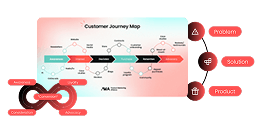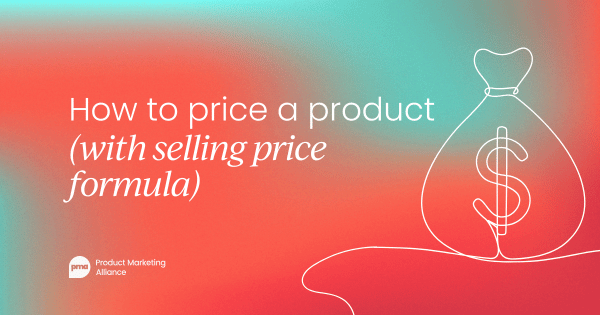Every product marketer knows the strain of “I have way too much on my plate” and “I don’t even know where to start”.
Tackling the daily rush of content calendars, campaign deadlines, and ad-hoc sales requests can feel like a Sisyphean task.
Layer in the need to identify the highest impact content along with defining the actual content of the content, and it’s no wonder the work can feel overwhelming.
However, rather than relying on their own assumptions or scattered feedback to guide strategy, product marketers should leverage the goldmine at their fingertips: customer conversations.
Every day, your sales and go-to-market teams are having dozens, if not hundreds, of conversations with prospects and customers. These conversations contain invaluable insights that can transform your content strategy from reactive to proactive, from assumption-based to data-driven.
Understanding the voice of your customer will help you prioritize, and leveraging the voice of your customer and your sellers will help you quickly produce content that adds real value and resonates.
Why you should start listening to more calls
Grounding your marketing strategy in actual customer conversations has a wide swath of benefits.
First, you’re no longer guessing what might resonate, you know. Second, the tyranny of the blank page, i.e. “where do I start and how do I say this?” can be circumvented by using the actual language your customers and sellers are using.
Marketers gain several major benefits when consistently using the voice of customer:
- Spot needs and trends: Instead of creating content based on what you think customers care about, you'll learn what they actually struggle with or care about, in their own words.
- Surface patterns: One sales call might reveal an interesting insight, but analyzing hundreds reveals patterns that can fundamentally reshape your content strategy.
- Uncover friction points: Identify where your messaging, positioning, or product is falling flat based on the questions or concerns that your customers repeatedly raise but might never surface in formal feedback channels.
- Identify gaps: Learn where your content is lacking or your enablement needs a refresh based on consistent topics in calls that your sales team does not have the collateral to appropriately address.
- Leverage existing language: Your sellers and customers are talking about everything from pain points to product use cases, and the words they use are the words that will resonate - recycle the language that works
- Capture competitive intelligence: Unfiltered conversations often reveal how prospects view your competition in ways that surveys never capture.
As one product marketing leader told us: “There’s a lot of value in looking at customer, prospect, and rep conversations, surfacing insights, and then having the ability to quickly turn around and create more customized, more tailored content to fit certain content gaps.”
Deeply listening to your customers at scale results in more strategic decisions across marketing, sales, and product.
What to focus on and extract
In theory, the idea of using your customer calls to refine your content strategy and create new content sounds great, but tactically, how do you do this? Below, we explore specific insights you can mine from these conversations and how they can fuel your marketing efforts.
Frequently Asked Questions
Sales calls are filled with questions. Your customers want to know how your product works, how smooth is onboarding, how to measure success, and everything in between.
From “Does this integrate with Slack?” to “What is the typical time to value?”, your sales team is fielding questions left, right, and center. By identifying patterns here, you can:
- Create comprehensive FAQ help center resources that sales, success, and customers can reference
- Update your website copy to address real, common customer questions
- Develop SEO-optimized content targeting high-value question topics raised early in the customer journey
- Create scalable enablement and training materials for sales and success based on effective responses
- Launch educational campaigns that address these early questions before a rep even speaks to a prospect
Objections and objection handling
Your customers are raising objections, and your sellers are handling them. Product marketers want to know what concerns customers raise and what is potentially stopping them from getting to a “Yes.”
They also want to know what the most effective objection handling responses are. All of this lives in your customer calls, so use them to create content
- Identify emerging objections, especially around new product and feature launches
- Codify how top performers successfully handle pushback
- Train your team on best practices for common objections using real customer examples
- Publish preemptive content that addresses concerns for earlier funnel stages
Competitive intelligence
Building out competitive intelligence can be tough. A customer recently told us: "We don't have a proper competitive intelligence program, and I'm trying to get even the bare minimum." This is a common pain we hear, but where to start? Your calls!
Your prospects often tell you everything you need to know about competitors. You can learn why they’re considering switching from a competitor, what they like about and what’s missing from their existing solution, how your product compares on pricing and features, and what their “must-haves” are for a final decision.
With this knowledge, product marketers can produce a slew of new materials:
- Build sharper battlecards based on real customer pains and feature needs
- Inform product roadmap based on what’s winning or losing deals
- Develop landing pages or campaigns that position you effectively
Top-of-funnel insights
If you’re looking to bring in more high quality prospects with your content, tailoring that content to what those prospects care about is key.
Identifying the pain points and use cases for potential customers helps product marketers more effectively target their audiences. Analyze what prospects are discussing in early-stage calls and get a window into their trigger moments, those moments that sent them searching for a solution in the first place.
- Write high-intent blog posts and thought leadership tied to real prospect needs
- Launch campaigns targeted at the top prospect pain points and use cases
- Update landing pages to reflect keywords and topics that prospects care about
Success stories
Happy customers will share their stories. Every customer check in is an opportunity to identify a new success, and sales is always looking for more success stories to share.
Product marketers all know the pain of ad-hoc trying to garner customer wins from their go-to-market teams; the reality is these wins are buried in calls. Even identifying the little gems, such as “this saved us so much time” point marketers in the right direction. Use success intel to:
- Identify high-potential case study candidates
- Highlight wins in sales enablement materials
- Fuel testimonial quotes across campaigns and collateral
- Update positioning materials to reflect real customer value
- Post quotes and wins across LinkedIn and other social media
Creating a “Customer Conversation Flywheel”
When you systematically analyze customer conversations, you create a powerful insight flywheel:
- Sales has better conversations with prospects using insights and messaging that marketing has refined from previous call data
- Marketing creates targeted content that directly addresses what customers are asking about, using language that resonates
- Product teams gain clarity on what features matter most and which pain points are most urgent to solve
- Sales enablement improves with training and content that reflects real-world customer interactions, not theoretical scenarios
This flywheel accelerates sales cycles, improves content utilization, and strengthens product-market fit. When everyone operates from the same customer reality, alignment happens naturally.
From manual analysis to AI-powered insights
The challenge, of course, is scale. Manually reviewing every sales call is impossible, and relying on reps to log all important insights rarely works. This is where AI-powered solutions like Naro come in.
By automatically analyzing sales conversations, tagging topics, identifying gaps, and highlighting patterns across the entire universe of go-to-market interactions, AI gives product marketers unprecedented visibility into the voice of the customer.
Imagine being able to:
- Breakdown every call into the pain points, questions, use cases, and other key topics
- Organize these topics into broad categories to identify trends and themes
- See exactly where you are well supported by existing content, and where there are gaps
- Quickly review all sales responses to a certain question or objection
- Identify emerging competitive threats before they become widespread
- Know exactly what content your sales team needs before they ask for it
This is how Naro’s AI makes marketers more strategic – by giving them full visibility into the data they’ve always needed, but could never reach at scale.
Listening isn’t just a sales skill, it’s a marketing superpower
Marketers have always wanted to get closer to the customer. AI just made it possible.
Your customer conversations are an untapped gold mine of insights waiting to be discovered. By systematically analyzing what prospects and customers are actually saying, you can transform your content strategy from reactive to proactive, from opinion-based to insight-driven.
In a world where content creation never stops, the most strategic product marketers don't guess what will work. They know what works because they're listening to customers at scale.


















 Follow us on LinkedIn
Follow us on LinkedIn





.svg)
Start the conversation
Become a member of Product Marketing Alliance to start commenting.
Sign up now